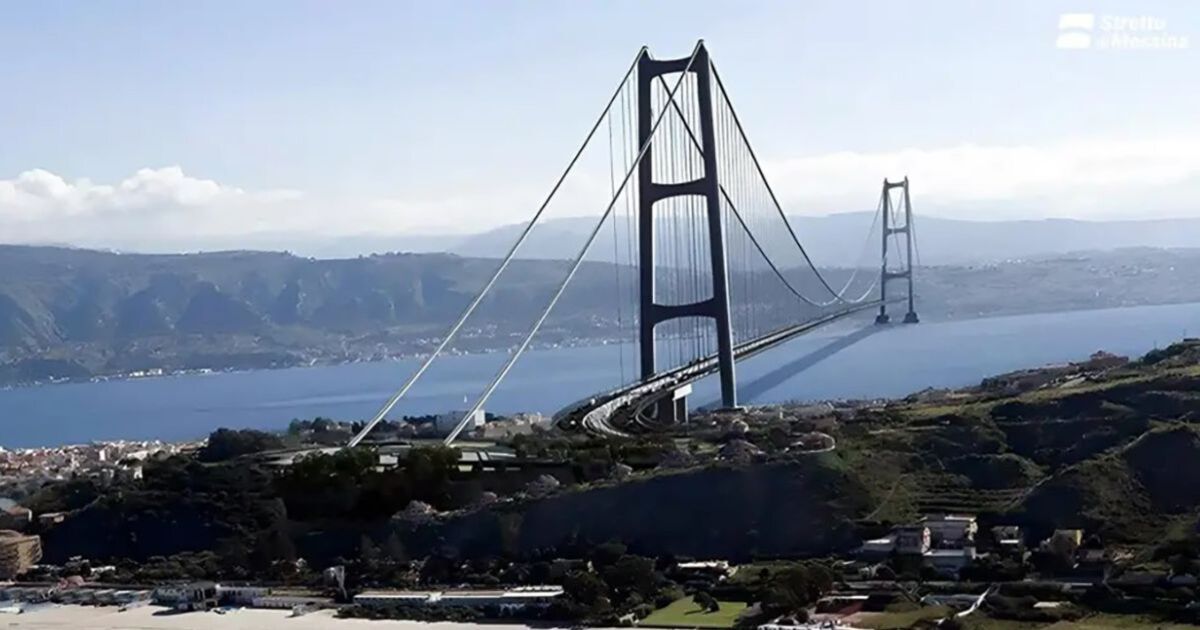Italy is set to build the world’s longest suspension bridge connecting the mainland to Sicily, the largest island in the Mediterranean. The huge Strait of Messina bridge will stretch around 3.3km (2 miles), exceeding the current record holder, Turkey’s Canakkale bridge, by more than a kilometre.
The prime minister hoped the “difficult challenge”, priced at €13.5billion (£11.7bn) and due for completion in 2032, would demonstrate Italy’s “willpower and technical expertise”. Held up by steel cables with a staggering diameter of 1.26 metres, the huge suspension bridge will be supported by two 399-metre towers, taller than the Shard in London, which stands at 309.6 metres.
The feat of engineering will have two railway lines and six traffic lanes, in total stretching 60 metres wide, just shy of the width of a football pitch at 64 metres. Developers say it will be able to hold 200 trains a day and 6,000 vehicles an hour.
Today, cars cross the strait on ferries, which take more than an hour compared to the bridge’s predicted 15-minute crossing.
Italy’s prime minister, Giorgia Meloni, said: “It is not an easy task but we consider it an investment in Italy’s present and future, and we like difficult challenges when they make sense.”
He added that the bridge will be a “demonstration of Italy’s willpower and technical expertise that is matched by few around the world.”
The bridge has been planned since the 1960s and supported by Italian prime ministers, including Silvio Berlusconi, but it has been shelved due to costs and environmental concerns, including earthquakes.
Opponents have vowed to defy the construction, citing concerns of earthquakes, given that Messina was destroyed by a deadly 7.1 magnitude quake in 1908, in which up to 80,000 people died. There are also fears it will threaten migrating birds between Europe and Africa.
WeBuild, the infrastructure group leading the project, said that suspension bridges “are the most seismicreliable structures, since they have a low sensitivity to earthquakes”. It claimed this is why they are used in earthquake prone areas such as California and Japan.
Claims that the construction would be taken by the mafia were dismissed by Matteo Salvini, the transport minister and deputy prime minister. He said: “If we didn’t build a bridge because, as some people say there is the mafia in Sicily, there is the ‘Ndrangheta in Calabria, we wouldn’t get anything done.”
He added that the bridge and the transport links would generate 120,000 jobs and boost the struggling economy of southern Italy.
Anthony Barbagallo, a Democratic Party MP, slammed the move as a “colossal waste of public money”, which should be used on schools and hospitals, and deemed it a “monument to uselessness and Salvini’s propaganda”.
Salvini quipped that the strait had only been crossed twice without a ferry, once by the Roman consul Lucius Metellus, and then by a 15th-century saint, said to have sailed across on his cloak.
He added that the journey time to Sicily using the ferry can take up to three hours, as the trains are split into sections that run onto tracks on the ferries, and then reassembled before continuing their journey once ashore.

